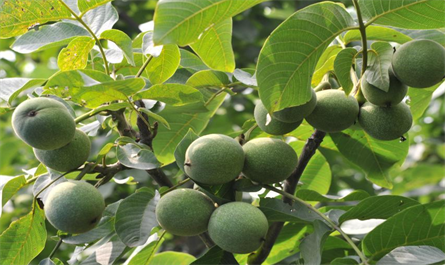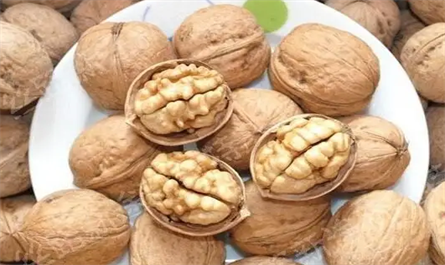What plant growth regulators are needed for kiwifruit farming?

1. Promote rooting
Indole-3-butyric acid (IBA)
From the end of February to mid-March, select the middle and lower sections of annual plants with a length of 10 to 15 cm and a diameter of 0.4 to 0.8 cm as cuttings. Seal the upper incision of the cuttings with wax, and use 5000 mg/L of indole-3-butyric acid (IBA) to dip the Chinese kiwifruit hard branch cuttings in a quick method of immersion for 3 seconds. Then, the cuttings are cultivated in a sterilized sandy soil seedling bed. The cutting survival rate reaches 81g% to 91.9%, and on average, more than 10 roots are produced per cutting. It should be noted that for hard branches, the soil temperature of the seedling bed should be controlled at 19 to 20 degrees during cutting, and it can be adjusted at 21 to 25 degrees after the wound heals.
Use indole-3-butyric acid (IBA) 500-1000 mg/L quick dipping method to treat green branches, or use indole-3-butyric acid (IBA) 200-500 mg/L dipping for 3 hours, and then cultivate in the sandy soil seedling bed, the rooting rate reaches 95%-100%. Green branch cuttings should be selected from the semi-lignified tender branches of the middle and lower parts of kiwifruit, with 1-2 leaves left. After treatment, the seedling bed should be controlled at about 25℃, and the seedling bed should maintain a certain humidity, generally the relative humidity should be controlled to 95%.
Naphthalene acetic acid (NAA)
Select one-year-old semi-lignified twig cuttings of Chinese kiwifruit, leave 1-2 leaves appropriately, immerse the base of the cuttings in a 200mg/L aqueous solution of Naphthalene acetic acid (NAA) for 3 hours, take them out and moisturize them with sterilized wet sand, which can promote the rooting of kiwifruit cuttings. Semi-lignified Chinese kiwifruit leaf cuttings were treated with 200mg/L and 500mg/L Naphthalene acetic acid (NAA), and the rooting rates of the cuttings were 66.6% and 53.3%, respectively, which was significantly higher than the rooting rate of 26.6% of the control without drug.
Precautions for use:
Low concentrations of Naphthalene acetic acid (NAA) can promote rooting, while high concentrations inhibit rooting, so it is necessary to master the appropriate concentration; the upper end of the twig cuttings should be sealed with wax to reduce water evaporation and increase the survival rate.

2. Inducing seedlessness and reducing seeds
2,4-D
Using the delicious kiwifruit Miliang No. 1 as the test material, applying 0.2% 2,4-D to the pedicels can significantly reduce the number of seeds and the total weight of fresh seeds, while there is no significant difference in the thousand-grain weight of seeds, which also proves that 2,4-D has a tendency to induce kiwifruit to form seedless or less seeds.
Gibberellic Acid GA3
Applying 2% Gibberellic Acid GA3 to the pedicels can significantly reduce the number of seeds and the total weight of fresh seeds.
Naphthalene acetic acid (NAA) + Gibberellic Acid GA3 + 6-BA
Use a mixture of 30 mg/L Naphthalene acetic acid (NAA) and 100 mg/L Gibberellic Acid GA3 or 100 mg/L 6-BA, and add 2-1.5 g/L urea, spray on the flowering period of Hayward and Zaoxian varieties, and spray on young fruits once 10 days and 30 days after flowering, which can reduce the number of seeds in kiwifruit, induce the formation of seedless fruits, and reduce the fruit shedding rate.
3. Promote growth, improve quality, and increase production
Compound Sodium Nitrophenolates (Atonik)
Spray 3-4 mg/L solution after new buds emerge, spray 2-3 times from 20 days before flowering to flowering, and spray 1-2 times after fruiting, which can promote fruiting and fruit hypertrophy. Continuous use can effectively enhance and restore tree vigor, inhibit decline, and have a good improvement on product quality and taste.
Diethyl aminoethyl hexanoate (DA-6)
Spray once with 8-15 mg/L before flowering, after fruit setting, and during the fruit expansion period to increase the fruit setting rate, make the fruit grow faster, uniform in size, increase the sugar content, improve the quality, and increase the yield.
KT-30 (forchlorfenuron)
10-30 days after full flowering, use KT-30 (forchlorfenuron) 3-5 mg/L solution to soak the fruit clusters, the single fruit weight can be increased by 30%-50%, and it also has the effect of increasing sugar and reducing acid. Continuous use does not affect the formation of flower buds.
4. Ripening
KT-30 (forchlorfenuron)
10-30 days after full flowering, use KT-30 (forchlorfenuron) 3-5 mg/L solution to soak the fruit clusters, which can mature 10 days earlier, and it also has the effect of increasing sugar and reducing acid. Continuous use does not affect the formation of flower buds.
RECENT POSTS
-
Comprehensive analysis of the various factors that need to be considered in growing pineapples
-
The key steps of pineapple cultivation include soil selection, sowing, management and pest control
-
What effect does S-abscisic acid have on grapes?
-
Application of plant growth regulators in cherry farming
Featured News



